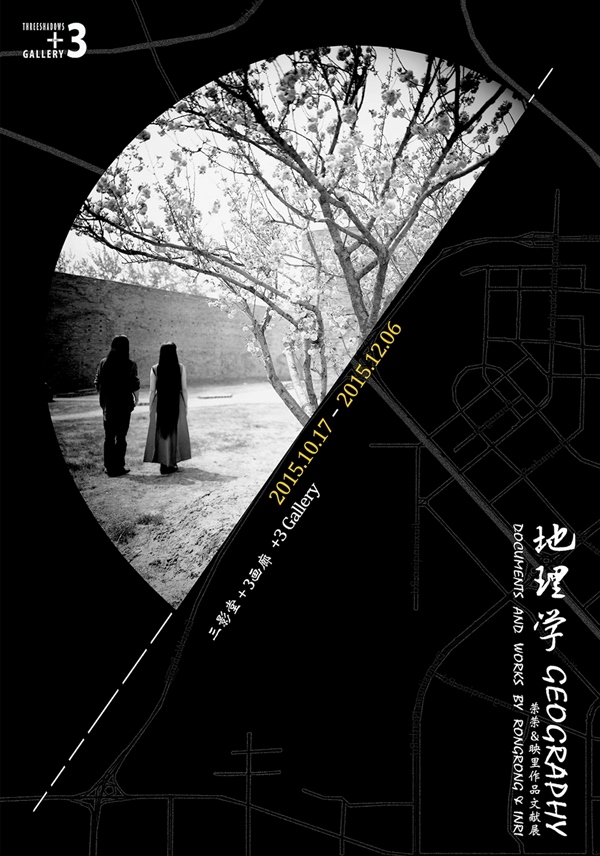借花献佛
王琦
2012年的其中一个傍晚,光的盛筵与身处巍山古城的卢彦鹏相遇。
火把节的烟花引诱着这个酒后的摄影师举起相机,他将镜头对准两棵树中间,向上与向下,重复两个动作——拍烟花散开,以及拍它散落下来。
作为工业革命产物的摄影术,此时形似一种祭祀的仪式,参与了这个古老节日的狂欢,但没有任何摄取历史的野心。昆虫一样的光被捕捉下来,节肢动物的触角或胫节伸展在黑暗中。可能是原始天真的卢彦鹏的投射,也可能只是他记录了一次谬斯与现实世界的交媾,一次光的繁殖,证实了摄影成为一种偶然的神迹的可能。
但这不是“决定性的瞬间”。拿起相机、按下快门这个动作对他来说更像捕风捉影。这些靠直觉捕获的光影在暗房里成为笔触,卢彦鹏靠它们绘画他的摄影。早期的《石头的记忆》中,他的影像与太太凌华的画作重叠,对卢彦鹏来说,这是同一时期出去拍照的他与在家画画的凌华在不同空间的重叠。这组作品最早透露了其影像的两个当下----摄影当下和暗房当下,是观看与成为记忆的观看的交织,既有淋的酣畅,又有氤氲的混沌。
对象因此是被消解的,这使他在处理山或佛像这类题材时回避了一种对象重量。山和佛像同样是一个形体或轮廓,一种笔触的线索。
最早当他游荡在山野或寺庙中时,也曾刻意避免将佛像作为拍摄对象,宗教场塑造了一种庄严感,尽管它们本身丰盛的样式总在吸引他,但这也可能遏制摄影创作的主体性,使他仅仅成为一个形象或符号的记录者。后来他尝试拍一些老家平和的地方小神,民间信仰有更世俗化的形象,让人更易亲近。再后来,看到我收藏的一些明清木佛像在家中随意摆放,完全脱离了宗教语境,他便更自如,像拍烟花一样随手捕捉它们的轮廓。
烟花与佛像的重叠进一步减轻了重量。古时塑完像在佛像背后开孔洞,放入经咒、五谷、药材或金属肺肝并封印,以期神力。烟花似乎就是这些依据式样传统雕刻的匠人产物装藏那一瞬的灵光乍现,它调动了图像的运动感,让这些尘埃落定的形体有了一种继续塑造的可能。卢彦鹏这个时间和空间的中介者,用两个当下的重叠,完成了一次借花献佛。
Blossom with Buddha
Wang Qi
One night in 2012, while situated in the ancient city of Weishan, amid a feast of lights, I met Lu Yanpeng.
The fireworks of the Torch Festival enticed the photographer to take up his camera after having a few drinks. He aimed the lens between two trees, above and below, two repeating motions—capturing the blooming spread of the fireworks along with their scattered dispersal.
As a product of the Industrial Revolution, photographic technology in this moment seems akin to a kind of ritual ceremony, participating in the revelry of this ancient festival without any wild ambitions of documenting history. These little lightening bug like sparks were seized as they fell, extending out into the darkness like the antennae or legs of an arthropod. While it is possible that this is the inherent naivety of Lu Yanpeng's work, it is also quite possible that he merely happened to record an intimate coupling between the muses and the real world—a singular moment of brilliant, breeding light, confirming the possibility of photography as a miraculous happenstance.
However, this isn't “the decisive moment”. Grabbing the camera, pressing the shutter— according to him, these actions are comparable to chasing the wind and clutching at shadows. The interplay of light and shadows he intuitively captures become brushstrokes in the darkroom, Lu Yanpeng relies upon them them to paint his photographs. In his early work Memory of Stones, his images are superimposed with paintings by his wife Ling Hua. According to Lu Yanpeng, this process was a way of superimposing him going out to shoot and Ling Hua staying home to paint during the same period. This series was the first to reveal the two simultaneous present moments within his work—the present of photographing and the present of the darkroom, an intermingling of viewing and the memory of viewing, interspersed with the glimmer of drunken merriment and the thick fog of primal chaos.
Consequently, the subject of his image is essentially dissolved, which allows his treatment of subject matter such as sacred peaks and buddhas to evade their objective weight. Similarly, his renderings of sacred peaks and buddhas are both physical form and contour, the thread of a brushstroke.
Early on, when drifting among remote mountains and temples, he painstakingly avoided making the buddha his subject and allowing religious sites to create an air of solemnity. Yet all the while, their sumptuous form always fascinated him, perhaps this, along with the contained subjectivity of photography, caused him to become a mere recorder of form and symbol. Later, he tried to photograph some secular images of local deities and folk customs in his ancestral village, allowing them to be more accessible to people. Even later, when he saw some Ming-Qing wooden buddha sculptures in my collection placed randomly around my home, completely separated from any religious context, he effortlessly captured their contours just like he photographed those fireworks.
The superimposition of fireworks and buddhas goes one step further to lessen their heft. Upon completion of an antique buddhist sculpture, a hole was formed in the back which was then stuffed with scripture, curses, grain, medicinal herbs, or precious metals and sealed in order to impart divine powers. Fireworks seem to be the products of the same craftsman responsible for this kind of traditional engraving—loaded with the sudden flash of divine light, fostering a sense of movement in the image, providing static physical forms with the possibility of continuous formation. Lu Yanpeng, as an intermediary of time and space, superimposes two present moments to form an exquisite flower to be offered before the buddha.
卢彦鹏
1984年生于中国福建
2005年起生活于北京
个展
2015 “诗的显影” 艺术8画廊,北京
“夜的聚焦” Neri艺术中心,意大利维琴察
“夜的聚焦” Neri艺术中心,法国巴黎
2014 “物语” SEE+画廊,北京
2012 “构筑诗意的栖居” 映像东区画廊,四川成都
2012 “禁止靠近的风景” 艺术8画廊,北京
“空-气” 世界画廊,香港
“空-气” M97画廊,上海
2011 “空-气” 第十一届平遥国际摄影大展,山西平遥
2010 “空-山” 艺术8画廊,北京
2009 “灵魂出窍” 第九届平遥国际摄影大展,山西平遥
群展
2014 “影像中国” 白盒子画廊,美国波特兰
“此景纷远” 列日文化艺术中心,列日,比利时
巴黎艺术博览会,巴黎大皇宫,法国巴黎
“酸甜苦辣“卢瓦尔大区中国文化节, 法国
2013 “令世界喜出望外“ 艺术8画廊,北京
“视差” M97画廊,上海
“园林”三条袛园画廊,日本京都
“造山”喂空间,福建厦门
“相像”世界画廊,香港
“亚洲先锋摄影师” 戴高乐中文图书馆 巴黎
“园林” 周围艺术画廊,上海
“暖春”框余画廊,云南昆明
2012 “亚洲先锋摄影师成长计划” 台北摄影节,台湾
“亚洲先锋摄影师成长计划” 第四届大理国际影会,云南大理
“再看风景” 第四节大理国际影会,云南大理
“物是言非” 泛视觉空间,北京
“此景纷远” See+画廊,北京
“18-Photographers”208画廊,法国巴黎
2011 “此二人”爱普生影艺坊,北京
“酸甜苦辣”昂热大剧院,法国巴黎
“一重影事” 何香凝美术馆,广东深圳
“空-气” 惠普材艺工房,北京
“像外之像” 框余画廊,云南昆明
“镜界” 罗卡当代艺术空间,福建厦门
2010 “不一样的风景” 国际摄影艺术中心,四川成都
“此二人” 第十届平遥国际摄影大展,山西平遥
“向摄影致敬—技术之美” 798映艺术中心,北京
夏季艺术家联展 M97画廊,上海
789艺文节“我就是这样”有态度摄影展 方家胡同五道营胡同,北京
“不一样的风景” 第二届大理国际影会,云南大理
“一即 一切” 周围艺术画廊,上海
“集美国际当代艺术节-青年新锐展” 罗卡当代艺术空间,福建厦门
“不一样的风景” 爱普生影艺坊,上海
2010年影像档案展 宋庄美术馆,北京
中国新锐影像展 草场地红一号院艺术区,北京
“另一个故事” 澳大利亚摄影双年展弗里曼特尔艺术中心 澳大利亚
“不一样的风景” 798映艺术中心,北京
“不确定的可能性” 宋庄美术馆,北京
2009 “灵魂出窍” 第九届平遥国际摄影大展,山西平遥
“BALANCE摄影展” 盛世龙源国粹院,北京
“BCA夏季艺术市集” 天安时间画廊,北京
“临点—年轻摄影家眼中的中国” 三影堂摄影艺术中心,北京
“BCA艺术青年艺术市集 天安时间画廊,北京
2008 “外象” 北京三影堂摄影艺术中心,北京
“中国新生代摄影” 香港艺穗会,香港
2006 “3030 New Photography in china”,上海
获奖
2012 “亚洲十佳先锋摄影师奖-第四节大理国际影会”,中国
2011 “摄影之友杂志-2011年年度青年摄影师奖“ ,中国
“AAC艺术中国-年度青年艺术家提名奖“,中国
“第11届平遥国际摄影大展摄影师大奖“,中国
“荷兰FOAM摄影博物馆Foam paul huf世界100位摄影师提名奖“,荷兰
2010 “像素杂志-2010年度新锐奖”,中国
“色影无忌-2010年度新锐奖”,中国
2009 “三影堂摄影新人奖”,中国
Lu Yanpeng
1984 Born in Zhangzhou, Fujian Province
2005 Started to live and work in Beijing
SOLO EXHIBITIONS
2015 Revelator of Poetry Yishu-8, Beijing, China
La Nuit d’Orient Neri Contemporary Art, Vicenza, Italy
La Nuit d’Orient Neri Contemporary, Paris, France
2014 Sense of Presence See+ Gallery, Beijing, China
2012 To Build a Poetic Dwelling Eastern Image Photo Gallery, Chengdu, Sichuan, China
Paysages Interdits Yishu-8, Beijing, China
Open Air Galerie du Monde, Hongkong
Open Air M97 Gallery, Shanghai, China
2011 Open Air The 11th China Pingyao International Photography Festival, Pingyao, Shanxi, China
2010 Open Mountain Yishu-8, Beijing, China
2009 Out of Body The 9th Pingyao International Photography Festival, Pingyao, Shanxi, China
GROUP EXHIBITIONS
2014 Image China White Box Gallery, Portland, USA
Remote Landscape Liege Photography Biennale, Liege Culture Art Center, Liege, Belgium
Paris Art Fair Grand Palais, Paris, France
Hôtel de Région, Pays de la Loire-China Culture Festival, Nantes, France
Three Shadows 1st Experimental Image Open Exhibition Three Shadows Photography Art Center,
Beijing, China
2013 Re-enchanter Le Monde Yishu-8, Beijing, China
Parallax II M97 Gallery, Shanghai, China
Garden Tokyo, Japan
Man-Made Mountain Wei Gallery, Xiamen, Fujian, China
Imageina Tion Galerie du Monde, Hongkong
Pioneer Domains Photographer Charles de Gaulle Chinese Library, Paris, France
Garden, Zhouwei Art Gallery, Shanghai, China
Warm Spring, KuangYu Gallery, Kunming, Yunnan, China
2012 The Asia Pioneer Photographer Foundation Taipei Photography Festival, Taipei, Taiwan
The Asia Pioneer Photographer Foundation Dali International Photography Festival, Dali, Yunnan,
China
Resurvey The Landscape Dali International Photography Festival, Dali, Yunnan, China
Beyond Babu Space, Beijing, China
Remote Landscape See+ Gallery, Beijing, China
18-Photographers 208 Gallery, Paris, France
2011 The Two Epson Imaging Gallery, Beijing
SUAN TIAN KU LA: 4 saveurs, 4 photographes, 4 regards sur la société chinoise Angers, France
Recurrent Shadows He Xiangning Art Gallery, Shenzhen, Guangdong, China
Open Air Hewlett-Packard Art House, Beijing, China
Manifestation of Image Kuan Yu Gallery, Kunming, Yunnan, China
Kalei Doscope LuoCa Modern Art Gallery, Xiamen, Fujian, China
2010 Another Landscape Chengdu International Photography Arts Center, Chengdu, Sichuan, China
The Two Pingyao International Photography Festival, Pingyao, Shanxi, China
M97 Artists Summer Group Exhibition M97 Gallery, Shanghai, China
Another Landscape 2nd International Dali Film Festival, Dali, Yunnan, China
The One Around Gallery, Shanghai, China
Jimei International Modern Festival New Young Artists Exhibition LuoCa Modern Art Gallery,
Xiamen, Fujian, China
Another Landscape 798 Inter Art Center & Gallery, Beijing, China
The Possibility of Uncertainty Songzhuang Museum, Beijing, China
2009 Out of Body Pingyao International Photography Festival, Pingyao, Shanxi, China
BALANCE Photography Exhibition, Beijing, China
BCA The Market Summer Beijing Center for the Arts, Beijing, China
Points of Impact – China Through the Eyes of Young Photographers Three Shadows Photography Art Center, Beijing, China
2008 New Generation Chinese Photography Hong Kong
2006 3030 New Photography in China, Shanghai, China
AWARDS
2012 Top 10 Asia Pioneer Photographer Award – The 4th Dali International Photography Festival, China
2011 Photographers Companion 2011 Annual Young Photographers Award, China
AAC Art China-Annual Young Artist Award Nomonation, China
The 11th Pingyao International Photography Festival Photographers Awards, China
Netherlands FOAM Photography Museum Foam paul huf World 100 Photographers Award Nomination
2010 Pixel Magazine 2010 Annual Pioneer Photographer Award, China
Se Ying Wu Ji Annual New Pioneer Photographer Award, China
2009 Three Shadow Photography Newcomer Award, China

